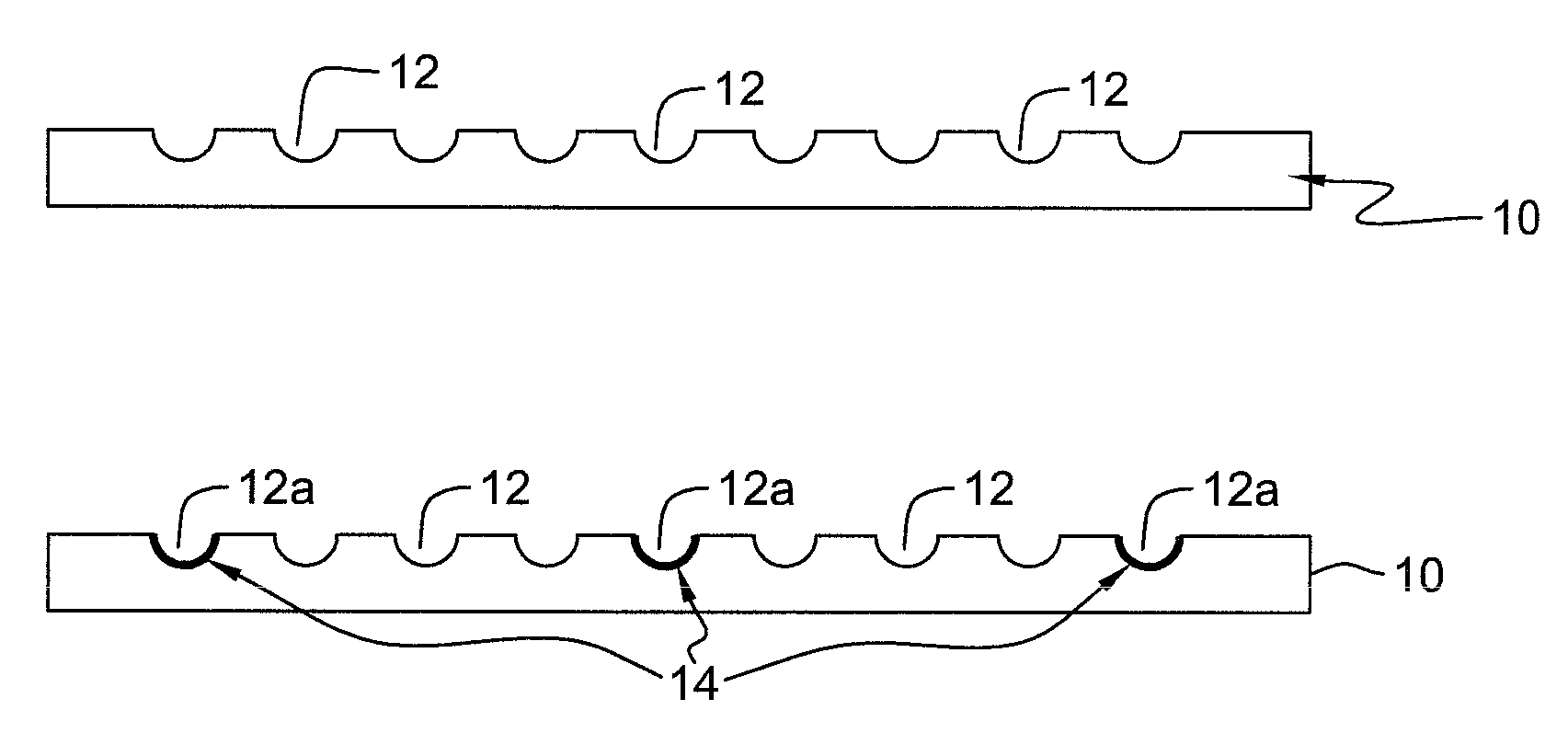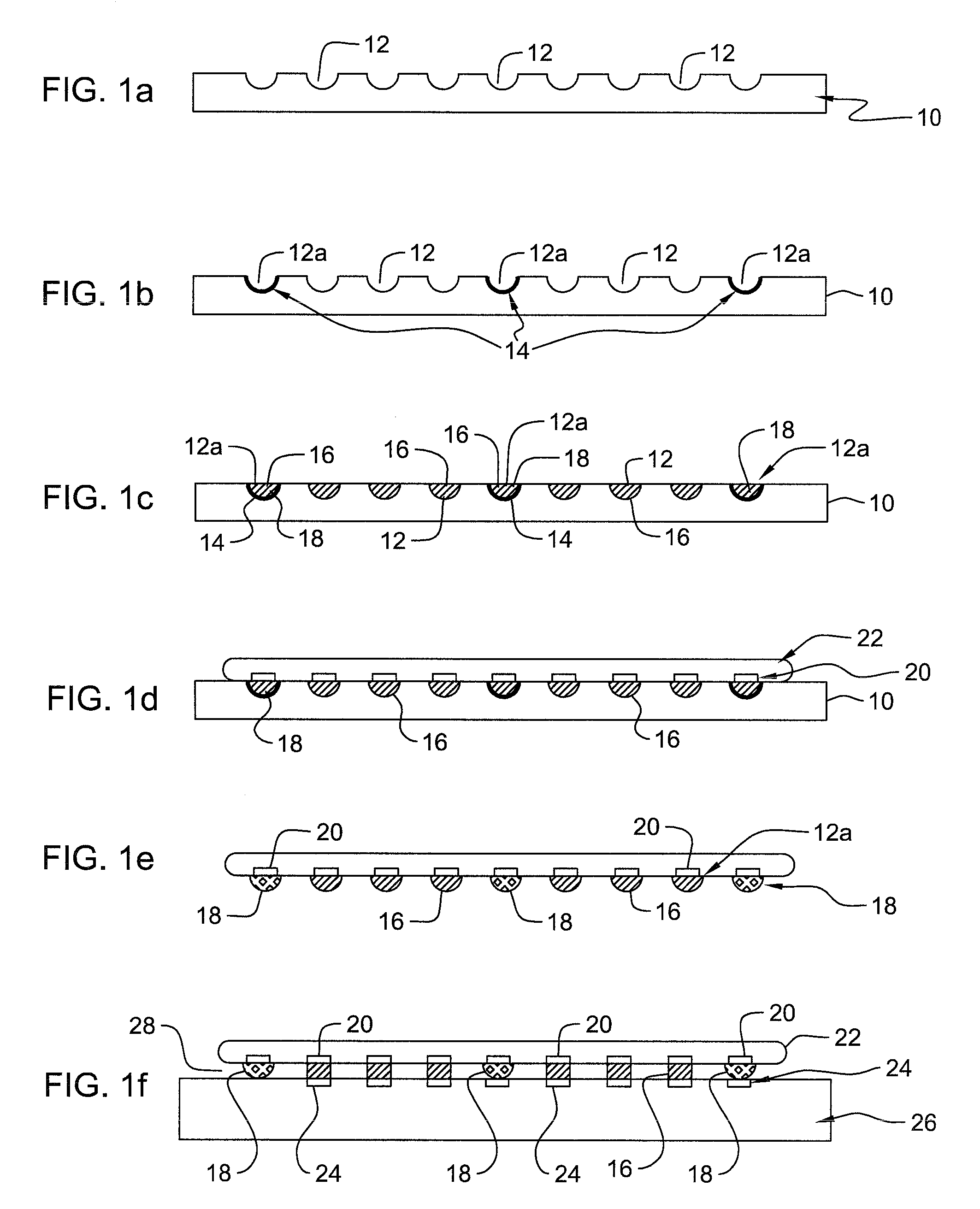High-temperature alloy standoffs for injection molding of solder
a technology of alloy standoff and solder, which is applied in the direction of soldering apparatus, sustainable manufacturing/processing, and final product manufacturing, etc., can solve the problems of large volume of chemical baths, impracticality of solder paste screening techniques, and high cost, and achieves convenient manufacturing, accurate control, and economical
- Summary
- Abstract
- Description
- Claims
- Application Information
AI Technical Summary
Benefits of technology
Problems solved by technology
Method used
Image
Examples
Embodiment Construction
[0013]Referring now in detail to the illustrated embodiment of the inventive method, as represented in FIGS. 1a through 1f of the drawings, FIG. 1a illustrates an essentially standard injection molded solder mold 10 incorporating a plurality of cavities 12, which in this case are hemispherical in shape, although other shapes are contemplatable. The mold, as is well known in the technology, is generally formed of a suitable dielectric material, such as a boro-silicate glass, or the like.
[0014]As indicated in FIG. 1b of the drawings, at various locations, some of the cavities 12a are lined with a metal 14, preferably, but not necessarily, employing a shadow mask or sputtering technique.
[0015]All of the cavities 12, 12a in the mold 10, as illustrated in FIG. 1c of the drawings, are then filled with a solder 16, employing standard techniques, and wherein the solder 16 will then alloy with the metal 14 in the selected cavities 12a of FIG. 1b, so as to produce a higher temperature solder ...
PUM
| Property | Measurement | Unit |
|---|---|---|
| temperature | aaaaa | aaaaa |
| densities | aaaaa | aaaaa |
| volumes | aaaaa | aaaaa |
Abstract
Description
Claims
Application Information
 Login to View More
Login to View More - R&D
- Intellectual Property
- Life Sciences
- Materials
- Tech Scout
- Unparalleled Data Quality
- Higher Quality Content
- 60% Fewer Hallucinations
Browse by: Latest US Patents, China's latest patents, Technical Efficacy Thesaurus, Application Domain, Technology Topic, Popular Technical Reports.
© 2025 PatSnap. All rights reserved.Legal|Privacy policy|Modern Slavery Act Transparency Statement|Sitemap|About US| Contact US: help@patsnap.com


